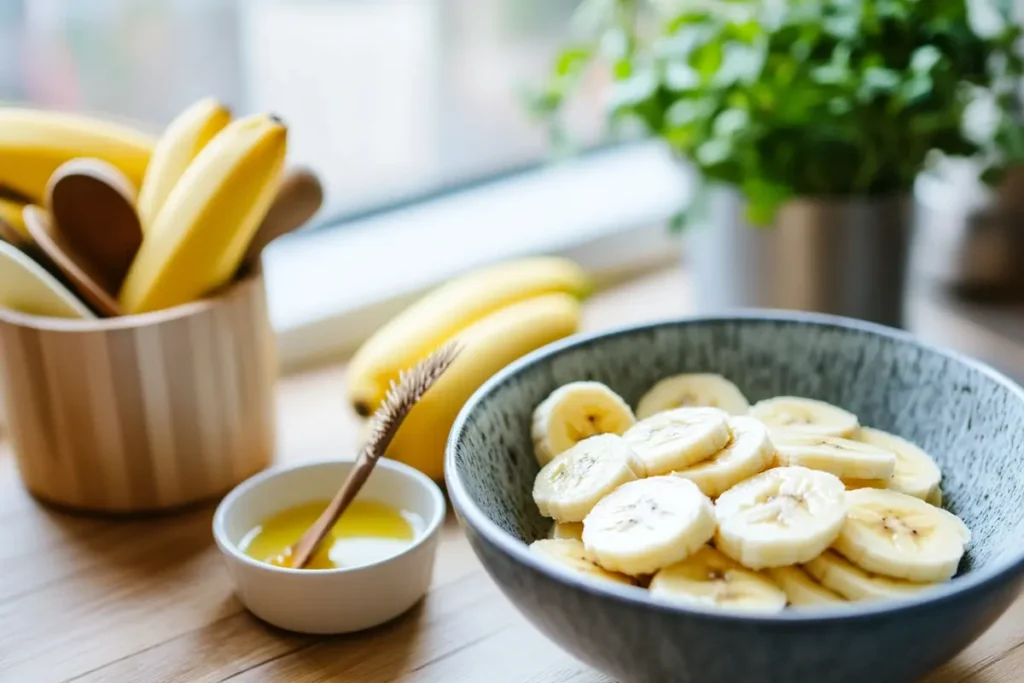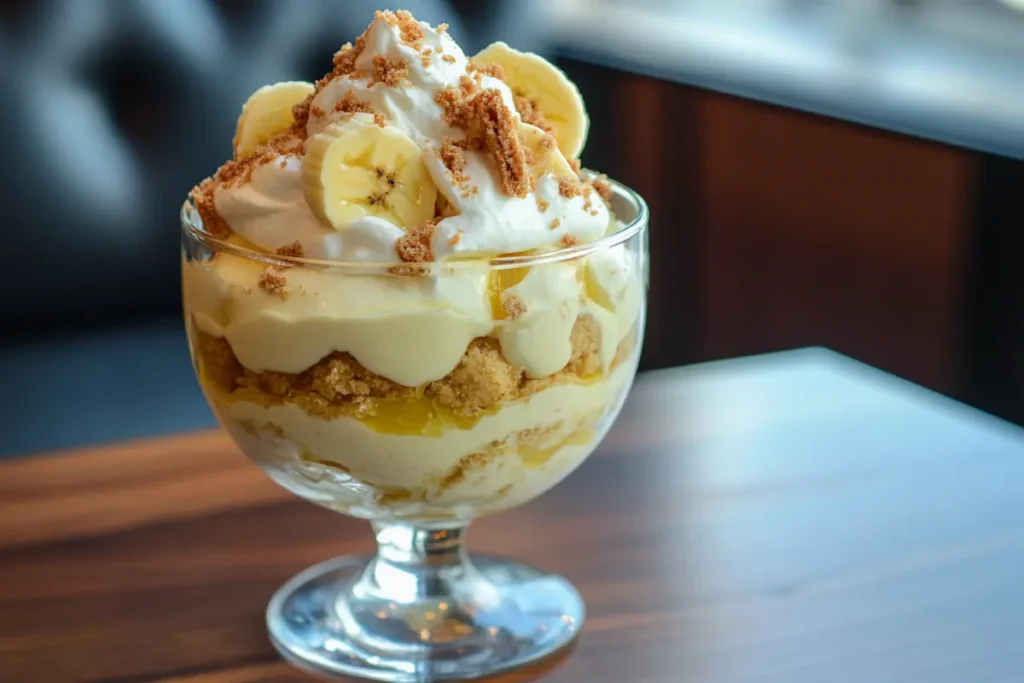Banana pudding is a timeless dessert cherished for its creamy layers of pudding, fresh bananas, and soft vanilla wafers. However, one common question that arises when preparing this classic treat is, “How do you keep bananas from rotting in banana pudding?” The sight of browned or mushy bananas can easily diminish its appeal. Fortunately, there are several simple strategies to preserve the freshness of bananas in your pudding.
In this guide, we will walk through tips, tricks, and expert techniques to keep your bananas looking fresh while ensuring the dessert remains delicious. From selecting the right bananas to proper storage methods, we’ll help you perfect this classic dish.
Understanding the Problem: Why Do Bananas Rot in Banana Pudding?
Before addressing solutions, it is essential to understand why bananas spoil quickly in banana pudding. Several factors contribute to this issue:
1. Enzymatic Browning
When bananas are sliced, their enzymes react with oxygen in the air, leading to enzymatic browning. This process causes discoloration, which may not immediately spoil the bananas but does affect their appearance and taste.
2. Moisture and Heat
High moisture levels in pudding, combined with heat during preparation or storage, can accelerate the degradation of banana slices. As a result, the slices may become mushy and lose their structure.
3. Ethylene Gas Release
Bananas naturally emit ethylene gas as they ripen. This gas speeds up ripening not just for the banana itself but for nearby fruits as well. In a layered dessert like pudding, this process can lead to faster spoilage.
The Art of Keeping Bananas Fresh in Banana Pudding
With the causes clarified, let’s explore actionable solutions to preserve banana freshness in your dessert:
1. Start with the Right Bananas
Selecting the appropriate bananas is the foundation for a perfect banana pudding. Ripe but firm bananas strike the ideal balance between sweetness and structural integrity. Avoid overly ripe bananas, as their softness makes them prone to quick spoilage.
2. Slice and Treat the Bananas
Preventing browning begins as soon as you slice the bananas:
- Lightly coat the slices with lemon or lime juice. The natural antioxidants in these fruits slow down oxidation.
- For a sweeter alternative, pineapple juice works well, enhancing the flavor while keeping the bananas fresh.
- If you want to avoid citrus altogether, a thin layer of sugar syrup can provide a similar protective barrier.

3. Layer Strategically
Strategic layering plays a crucial role in minimizing banana exposure to air:
- Begin with a base layer of pudding to create a shield for the bananas.
- Alternate the bananas with vanilla wafers and pudding, ensuring no slices are left exposed.
- Finish with a final pudding layer or whipped cream to fully seal the topmost banana layer from air.
4. Use a Gelatin Coating
To add an extra layer of protection, apply a thin gelatin glaze. Dissolve unflavored gelatin in warm water, allow it to cool slightly, and gently brush it over the banana slices. This transparent seal not only keeps air out but also maintains the bananas’ texture.
5. Refrigerate Properly
Proper storage is key to maximizing freshness. Cover the pudding tightly with plastic wrap, ensuring the wrap touches the pudding’s surface to minimize air exposure. Additionally, place the dessert in an airtight container before refrigerating. Cold temperatures significantly slow down enzymatic activity, helping to keep the bananas fresh for up to three days.
A Step-by-Step Banana Pudding Recipe
To ensure you get the best results, follow this detailed banana pudding recipe that incorporates these freshness-preserving techniques:
Ingredients:
- 5 ripe but firm bananas
- 3 cups vanilla pudding (homemade or store-bought)
- 1 box vanilla wafers
- 1 cup whipped cream
- 2 tablespoons lemon or pineapple juice
- 1 teaspoon unflavored gelatin (optional)
Directions:
First step: Prepare the Bananas
- Peel and slice the bananas into uniform rounds.
- Toss the slices in lemon or pineapple juice to coat them evenly, preventing oxidation.
- Pat the slices dry with a paper towel to remove any excess liquid before layering.
Second step: Prepare the Pudding
- Allow homemade pudding to cool completely before assembly. Using warm pudding can hasten the softening of bananas.
Third step: Assemble the Pudding
- Spread a thin layer of pudding at the bottom of your dish to serve as a base.
- Place a layer of vanilla wafers over the pudding, ensuring full coverage.
- Add a layer of treated banana slices on top of the wafers.
- Repeat the process—pudding, wafers, bananas—until you fill the dish, finishing with a final pudding or whipped cream layer.
Fourth step: Garnish and Store
- For added flair, sprinkle crushed vanilla wafers or shaved chocolate on top.
- Cover the pudding with plastic wrap, pressing it down to touch the surface.
- Refrigerate the pudding for at least four hours before serving to allow the flavors to meld.

Prolonging the Life of Banana Pudding
If you need to prepare the pudding in advance or store leftovers, consider the following options:
1. Freeze the Dessert
Freezing can help extend the life of banana pudding. However, freezing fresh bananas alters their texture. To avoid this issue, assemble the pudding without bananas and add fresh slices after thawing.
2. Use Banana Substitutes
If you are particularly concerned about spoilage, substitutes can be a practical alternative:
- Banana Chips: These provide a crunchy texture and eliminate the risk of browning.
- Banana Extract: By mixing banana flavoring directly into the pudding, you can replicate the flavor without using fresh fruit.
Frequently Asked Questions
1. Why do bananas brown so quickly in pudding?
Bananas brown because their enzymes react with oxygen, a process known as oxidation. Additionally, the moisture in pudding can accelerate this reaction, leading to discoloration.
2. How do you keep bananas from rotting in banana pudding?
To prevent bananas from rotting, treat them with citrus juice, layer them strategically to limit air exposure, and refrigerate the pudding promptly.
3. Can I eat browned bananas in pudding?
Yes, browned bananas are safe to eat, although their texture may become mushy and their flavor slightly altered.
4. What are the best substitutes for fresh bananas in pudding?
Banana chips and banana extract are excellent substitutes that eliminate the risk of browning while maintaining the dessert’s flavor.
5. How long does banana pudding stay fresh?
Properly stored banana pudding can remain fresh for up to three days in the refrigerator. For the best taste and appearance, consume it within 24 hours.
Conclusion
Banana pudding is a dessert that’s both nostalgic and delicious. By using techniques like treating bananas with citrus, layering them strategically, and refrigerating them properly, you can ensure your bananas remain fresh and vibrant. These methods not only preserve the appearance of your dessert but also enhance its overall flavor and presentation.
Now, the next time you hear someone ask, “How do you keep bananas from rotting in banana pudding?”, you’ll have the perfect answer—and an irresistibly fresh dessert to showcase!